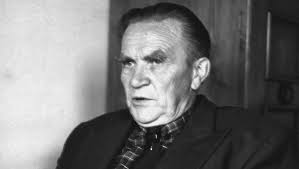
[I present the final segment in my series ‘The Airmen Who Died Twice’, offering a bold but confident hypothesis concerning Stalin’s objectives for the mission of sending agents to Norway disguised as British RAF officers. I have added a page containing the whole report in PDF format at ‘Airmen Who Died Twice’ (PDF), which may make the experience easier. This process is something of an experiment for me. I hope to improve the presentation soon. Feedback and tips appreciated!]
Chapter 7: Resistance in Norway
The overwhelming questions to be answered regarding the Soviet Union’s ability to stow two agents on a British plane, dressed in RAF uniforms, to parachute into southern Norway in September 1944 are: What possible objective could such a mission have had? And why would the RAF agree to such a foolhardy and potentially embarrassing adventure? The assumption must be that, for the mission to be successful, the agents, probably incapable of speaking fluent and unaccented English, would have been deemed capable of carrying out the impersonation of legitimate British officers, and thus of gaining access to the circle of a communist leader in whom Joseph Stalin had a particular interest. His name was Peder Furubotn, and he had for some time been incurring Stalin’s acute displeasure. Yet, if anything went wrong – or, equally astounding, even if the project were successful – the agents’ costume would immediately have implicated the RAF, with highly embarrassing implications.
In the analysis of these conundrums, it is useful to recapitulate the role of Norway in the war, its occupation by German forces, the collaboration or competition between various sabotage organizations and the nation’s governments at home and in exile, and the tenuous and contradictory relationship it held with the Soviet Union, a nominal ally. Norway was separated from Stalin’s fortress only by a thin section of the Finnish Petsamo region, an area rich in minerals, however, and thus bearing strategic importance.
The country had been ill-equipped to resist the German invasion of April 9, 1940. Hitler had designs on Norway’s natural resources, including its hydro-electric power, but he also needed to control the flow of iron-ore from neutral Sweden across the natural land-route. Great Britain and France had been aware of the threat, and they had prepared to send an Expeditionary Force to gain control of the valuable port of Narvik. This was conceived during the war between Finland and the Soviet Union, which started in September 1939. At that time, Nazi Germany and the Soviet Union were signatories to a joint non-aggression pact, and control of Finland had been granted to Stalin for purposes of national self-defence. Any communist-inspired resistance movements against the Germans were forbidden – until, of course, the Barbarossa invasion of Russia in June 1941 changed all the rules.
Britain in fact had had to beat a hasty retreat, assisting with the escape of the Norwegian royal family to London to create a government-in-exile in June 1940. It had overestimated the power of its own navy and misread the intentions of the Wehrmacht. Thus Norway fell into the category of occupied territory, and a cowed population had to decide what form resistance to the German invaders should take. In fact, the Nazis were overall more indulgent with the Norwegians than they were with other conquered nations: they regarded the Nordic race as Aryan brothers, and hoped to integrate the populace into the New Order when the war was won. That favouritism, however, did not extend to mercy when violence was exacted against their police and military forces, with some harsh reprisals enacted, and this tension played a major role in the following years.

Soon after Barbarossa, however, Norway took on fresh significance when Churchill and Roosevelt resolved, in August 1941, to assist the Soviet Union by sending supplies through the Arctic convoy system. This required ships to navigate the dangerous Norwegian and Barents seas to reach, primarily, the ports of Murmansk and Archangel, skirting the northern coasts of Norway, and thus becoming potential prey to German craft berthed in Norwegian ports and inlets, such as the battleship Tirpitz. The convoys continued (with some interruptions) until the end of the war. Stalin kept a close eye on Norway, and he evolved his strategy as the war progressed.
The accounts of resistance in Norway present a contradictory picture: some display ignorance, others practice concealment, and others distort (for political reasons). It is consequently often difficult to pin down the details of events – both their motivations and their outcomes. It seems to me that both London (in the guise of the government-in-exile and SOE) and Moscow (the NKGB) believed that they were controlling the strings, when in fact the agencies on the ground often pursued unlikely alliances to further their goals. I here try to concentrate on the less controversial facts, identifying the main motifs in the plotline.
The British Special Operations Executive trained and prepared a vigorous Norwegian section to carry out sabotage within Norway, which became more intense when the British suspected the Nazis of creating ‘heavy water’ as an important part of the project to build an atomic bomb. Yet fierce reprisals in response to SOE raids alarmed the major resistance organization in place, Milorg, and it resolved instead on a more passive approach, and to focus on preparation to assist invading forces for the time when the Nazis began to lose the war. Milorg was led by a lawyer, Jens Hauge, an enigmatic and controversial figure, who had sought a medical discharge from military service in 1939. He joined in early 1942. The tensions between SOE and Milorg were then resolved by the creation of the Anglo-Norwegian Collaboration Committee in the spring of 1942, and SOE’s independent course was officially halted by October of that year. Yet Milorg did not halt its own sabotage activities, and it pursued a course of assassinations of known traitors.
There was, however, another resistance group, Osvald, which evolved out of the pre-war antifascist Wollweber League, and was led by the more aggressive Asbjorn Sunde. He invoked the assistance of the Communist Party (now strictly underground), and established training centres around the country. Sunde was a tougher character, a sailor who had learned sabotage and assassination in the Spanish Civil War fighting with the Communists for the Republican movement against Franco’s Nationalists, and he was a loyal Stalinist. Thus a pattern familiar elsewhere in occupied Europe emerged: certain resistance groups were set on restoring the pre-war political configuration (such as SOE collaborating with the royalist/social democratic government-in-exile), while others were being directed by Moscow in preparation for a post-war communist takeover. Sunde was ordered to minimize sabotage activity, and to concentrate instead on providing intelligence to his NKGB bosses. Yet the relationships appear to have been very complex: the government-in-exile sometimes gave directions to the Stalinist Osvald group on sabotage projects, and it appears that even Milorg collaborated with it, engaging Sunde’s hitmen to carry out its targeted assassinations.
Added to this recipe was the afore-mentioned Peder Furubotn, leader of the Communist Party in Norway. Furubotn’s organizational skills and connections allowed him to sponsor resistance groups in Oslo, Bergen, and Hallingdal. He was also a controversial figure, known for his independence of thought: he was an outlier, a provincial, with his power-base in Bergen away from the capital centre of Oslo. But he was also a dedicated patriot who desired to bring a domestic Communist regime to Norway after the war through democratic processes, not under the thrall of the Soviet Union (rather like an unauthoritarian Tito). He had in fact spent the years 1930-1938 in Moscow, an experience that included the witnessing of the Great Purge and the execution of some of his friends, which assuredly made him deviate from the solid Stalinist line he had taken up in the 1920s.

According to his biographer, Professor Torgrim Titlestad, who has uniquely been able to inspect Russian archives, Furubotn had long been under the threat of execution, since in Moscow he had aligned himself closely with Bukharin, the executed ‘traitor’, and had refused to declare his public support for the outcome of the show-trials in 1938. Before Barbarossa, the Norwegian Communist party had tried to have Furubotn, who had from Bergen independently undertaken resistance in that period, removed from the Party, but the tables were turned when the Soviet Union became an enemy of the Nazi occupiers. At the time most other important Norwegian communists had either been killed, were in the hands of the Germans, or were refugees in Sweden, and Furubotn was elected General Secretary at the end of 1941. This was in defiance of Stalin’s orders of 1938 (when Furubotn was banished back to Norway from Moscow), that he should hold no senior position in the Party.
Furubotn was able to work independently for many years. He was a survivor. In spite of frequent unsuccessful attempts to bring him in line, during the war Moscow lacked local resources or the military reach to change his behaviour, or to remove him from office. At first glance, the need to have him out of the picture should have appeared less urgent as the war progressed, since Norway (apart from the strategic Petsamo region) did not feature strongly in Stalin’s plans for territorial control of Europe. It was not a conventional ‘buffer state’, hardly a threat to his ambitions, and Stalin accepted that it was part of the ‘western’ sphere of influence. The Soviet dictator did not want to waste resources in trying to control it, although he supported British-American desires to prevent valuable troops from being transferred from Norway to the battle zones in Germany, and he did collaborate with the British and Americans in the plan to oust the Nazis from the Finnmark (the North-east Norwegian territory abutting the Soviet Union).
Sunde’s Osvald group – perhaps surprisingly, given Sunde’s Stalinist aims – gained his funds primarily from the government-in-exile in London, supplemented occasionally by Moscow (through the agency of the Soviet legation in Stockholm, as the VENONA transcripts show). Yet Sunde looked to his rival, Furubotn, for funds, too. In September 1942 he agreed to supply guards at Furubotn’s central camp of the Norwegian Communist Party (NKP) in Hemsedal, in exchange for a continuing supply of money and materiel from the NKP leader. Furubotn had tried to make Sunde sabotage-leader for the NKP, but on the condition that he break his ties with Moscow – something Sunde refused to do, which strained the relationship, and led to severe friction by the end of 1943. Sunde established a training centre in Rukkekdalen in the winter of 1942, and recruited a network of saboteurs in the Torpo-Gol and Nesbyen areas, in the Hallingdal valley. This was the same area used by Milorg to establish its ‘Elg’ base in the early summer of 1944.
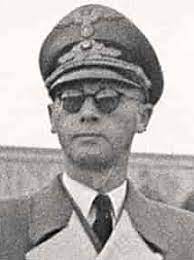
Yet the decreasing effectiveness of sabotage, and the costs of maintaining the subversive units, prompted a change of plan. By February 1944, Milorg, alongside the Foreign Office, SOE, and the OSS, had openly disparaged the Communist sabotage efforts, and had applied pressure on Osvald to reduce its aid for Furubotn. The feud between Sunde and Furubotn (which had sharpened when Furubotn had threatened to kill Sunde if he followed through on a plan to assassinate the Nazi Commissar Terboven) intensified. A month later, Sunde did indeed withdraw protection for Furubotn and his network, and he turned his attention to Norwegian exile groups in Sweden. The British increased their operations in support of eventually ousting the Germans: Operation FIRECREST was launched by sea in April 1944, a four-man team landing and then starting to give weapons training. In May, Moscow, through Pavel Sudoplatov (of Special Tasks), ordered Sunde to wind up his organization, and refrain from any further sabotage, Stalin explicitly admitting that the British were in charge in southern Norway, and that the theatre was too far away from Moscow for it to exert any influence. In June, however, Sunde’s network, including Furubotn’s group, came under fresh attack from the Gestapo and the Wehrmacht in Operation ALMENRAUSCH.
Furubotn did not respond well to these moves, and he was increasingly isolated: he had enemies in Hauge and Sunde already, but now, with his autonomous subversion efforts, became an irritant to the British to compound the enmity to him maintained by Stalin. That may have been a fresh pretext for Stalin to want to have him eliminated – as a proven ‘Trotskyist’ defying the policy of the vozhd – and a move against him could represent a useful gesture to his allies. Furubotn had incurred Stalin’s anger by defying his order to stay out of the Party organization when he had returned to Norway, by executing subversive campaigns during the period of the Nazi-Soviet pact (which he had openly criticized), by refusing orders to move to Sweden (where he feared he might be killed), by expressing support for the Norwegian government-in-exile in London, for attempting to wean Sunde away from the NKGB, and for openly publishing anti-Stalinist tracts in the summer of 1944. Others had been killed for less, and Furubotn believed that attempts would be made on his life on his home territory. Professor Titlestad has suggested that Moscow may have recommended to Sunde that he remove his security details from Furubuton’s hideout, thus perhaps allowing the Gestapo to infiltrate the NKP, and to take on the task of eliminating Furubotn. Yet Furubotn had escaped the ALMENRAUSCH assault, despite Sunde’s apparent betrayal, and may thereby have come afresh in Stalin’s sights.
The circumstances of the ALMENRAUSCH operation are puzzling. If a sizeable force assembled by the Wehrmacht with the help of the State Police (the Statspolitiet) did in fact conduct a punitive operation against Norwegian resistance forces (including Milorg, and the two factions of the KPN) on June 13, 1944, it is astonishing how little loss of life there was. The Wikipedia entry (the only account in English, I believe) at https://en.wikipedia.org/wiki/Operation_Almenrausch indicates that a force of eight-hundred was deployed, but that the operation was largely unsuccessful, even though it attacked a ‘secret’ hideout. Eight communists were arrested, but only one was executed. That does not sound like a typical Nazi response. Professor Titlestad explains it as a combination of the Nazis not wanting to kill a large number of fellow-Aryans, as well as a degree of nervousness about the chances of survival of the members of this punitive force in a hostile rural region. Yet the Professor also writes that Furubotn had been the Gestapo’s most wanted man, and that it had tortured and killed Norwegians in an attempt to track him down. The decisive outcome for Stalin, however, was that, in July 1944, Furubotn was still alive.
If an agreement solely for the infiltration by air by NKGB agents to Furubotn’s camp, without any explicit goal of assassination, did take place between Stalin and Churchill (which must be the least alarming hypothesis), it occurred at a time when relationships between Great Britain and the Soviet Union were rapidly deteriorating. SOE had grown frustrated with the lack of co-operation in Moscow, and the Foreign Office was infuriated by Stalin’s abuse of its Military Mission there. The Warsaw Uprising, when Stalin refused to allow Allied planes to refuel on Soviet territory, and the Red Army watched what was happening from across the Vistula, contributed to the discord. In addition, the pressure on the War Cabinet to return to the Soviet Union all POWs they had been liberating, and the lack of co-operation from the Russians over the efforts to attack the Tirpitz, conspired largely to an atmosphere of utter distrust. On August 18, Foreign Office Permanent Secretary Orme Sargent even declared that the Soviet Union was the future Enemy Number 1.
What is certain that some intense discussions took place in London towards the end of August, with Milorg’s chief, Hauge, visiting for four weeks, having been authorized to use the ‘bearing ball’ run by Mosquito from Stockholm to Leuchars. One outcome of that visit was that Milorg now became known as ‘Home Forces’. According to one account, sensing that victory was in sight, the ANCC in January had authorized the provision of a large amount of weaponry to Milorg, and in June SHAEF (now having taken charge of SOE projects) approved of attacks on Nazi industries and lines of communication. Professor Færøy, on the other hand, has stated very confidently that these increased shipments did not take place until ‘the autumn’. The scope of military coordination debated then included measures to counter German scorched earth policy, the capture of Gestapo documents, the destruction of the Gestapo HQ in Oslo and (perhaps most provocatively) a list of agreed assassination targets. Hauge’s meetings in Britain to determine these policies were held at senior level with the Norwegian Government in exile, with Special Forces Headquarters, with the Anglo-Norwegian Collaboration Committee, and with Viscount Selborne, the Minister of Economic Warfare in London, as well as with General Thorne in Edinburgh. Thorne was responsible for the deception plan of FORTITUDE NORTH, as well as for the preparation for the liberation of Norway. Yet, because of the sensitivity of the conspiracy, it is hard not to conclude that the meetings in the United Kingdom must have been entirely coincidental to the plot against Furubotn.
More reliable wireless communications were now being established between SOE and Milorg, and, in Operation GOLDEN EAGLE, two more agents were dropped directly in the Hallingdal area on August 28, to help establish the Elg base with improved radio contact, and to enable preparation for further intensive and frequent drops of supplies over the following months. And then, as Britain started to consolidate its hold over subversive operations in southern Norway, in early September 1944 the very sudden and highly momentous intelligence arrived that Stalin had approved the launching of attacks on the Tirpitz from Soviet territory, which caused a sudden flurry of changes to the PARAVANE project.
Whether the planned assassination of Furubotn (which is posited here as the motivation for the infiltration into southern Norway of Stalin’s agents) was related to the permission Stalin gave for British bombers to fly from Soviet airfields is probably unverifiable. The British must have had something important to gain from the arrangement, but any decision taken must have occurred at the highest levels of command. It is possible that Churchill did not know what Stalin’s precise plan for his agents was, but his agreement in allowing them to assume the identities of live RAF officers is extremely incriminating. If any knowledge of the details of the conspiracy did exist, it must surely have been restricted to Churchill and Gubbins, the head of SOE. SOE/MI6 had a direct – but highly insecure – line to Moscow through its representative George Hill, who was on good terms with Stalin, so negotiations could have been carried on through that medium. The relevant archival material shows some intense exchanges between London and Moscow in August and early September of 1944, but nothing obviously attributable to the Furubotn plot.
As for the RAF, it would obviously have known that it was being ordered to mount a highly irregular operation, but the leaders (i.e. Portal, Harris, Cochrane, McMullen, and Bottomley at the Air Ministry) would not have been aware that the objective of the mission was in fact assassination. They were probably informed that the subterfuge was simply part of an extended PICKAXE operation (i.e. one in a series of co-operative ventures between SOE and the NKGB), where Soviet agents had to be infiltrated in disguise in order that they would be welcomed properly by Hauge’s Milorg network. They would not have known that Sunde (probably) would then lead the twosome to Furubotn’s lair.
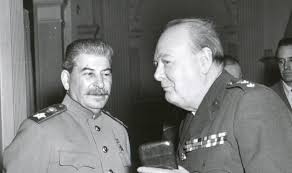
On the other hand, it was a low-risk undertaking for Stalin: he did not care about the fate of agents sent abroad on sabotage missions; their lives were expendable, and, since they would be wearing RAF uniforms, it would be difficult to trace anything to him, in any case. But for the British, it was a highly dangerous operation, involving deceit, not just with RAF crewmen, but with the Norwegian government, who, if its members learned of the plot, would not have taken kindly to the phenomenon of murder missions by foreign Communist infiltrators being abetted by their close wartime ally. Even if the mission had been successful, and the perpetrators had in some way been removed without their masquerade being detected, word might have leaked out, because of the packed Lancaster, the airmen who made it back safely, and the knowledge of the impersonated officers returning home. But if it failed – and in such a disastrous and spectacular fashion, as it did – the repercussions could have been tragic and far-reaching. Yet the destruction of the plane, and all inside it, managed to impose an eighty-year silence that has succeeded in exculpating all the perpetrators.
[I thank Professors Titlestad and Færøy for their advice on this chapter. The opinions represented here are of course my own, and I likewise take responsibility for any errors. coldspur]
Chapter 8: Conclusions
No documentation to prove that Churchill and Stalin conspired to launch the operation to Hallingdal has appeared, and it probably never will. Yet such a decision, to have NKGB agents dressed up in the uniforms of living RAF officers, and be equipped with their ID-tags, can have been authorized only at the very top. It was assuredly not an SOE operation (although SOE radios and servicemen were certainly employed); nor was it an idea of Bomber Command, which would have been fiercely resistant to the subterfuges and risks associated with such an enterprise. Churchill’s irrational and misguided desires to placate Stalin must have convinced him that the Generalissimo’s demands were worth acceding to. The opportunity to carry out an attack on the Tirpitz from Soviet territory, with a presumed greater chance of success than flying directly from Scotland, must have been irresistible to him.
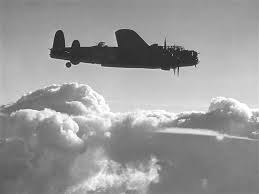
One can imagine the strained atmosphere when Lancaster PB416 prepared for take-off at Yagodnik on September 17, 1944. Because of the damaged and unusable planes left behind, their crews had to be allotted to the remaining flightworthy aircraft, resulting in crowded conditions. The mood would probably have been very positive, however, given the (modest) degree of success of PARAVANE, and the prospect of returning home with no loss of squadron life. And yet two Soviet citizens were foisted on this particular team, and the members must have been informed that the couple, equipped with parachutes, was to be dropped somewhere along the flightpath. They might not have known that the agents were masquerading as British fellow-airmen underneath their jackets, but they were probably disconcerted about this irregular deviation from the plans.

PB416 was never blown off course by inclement weather, as RAF reports later claimed. As the last plane in loose formation, it peeled off from the chain ahead of it off the coast of Sweden, and made a course for southern Norway. We know it was expected, because the navigator radioed his co-ordinates over Oystogo in Etnedal when the plane arrived there soon after one o’clock in the morning of September 17. These measures were recorded without alarm, even though the location was over three hundred miles to the north-west of the path on which the rest of the sixteen Lancasters were cruising home.
What went wrong? One can perhaps imagine that the NKGB agents had second thoughts – not that they probably had any first thoughts of their own volition over the exploit. Threats had probably been made concerning their families. They knew that they must be on a suicide mission: even if they were successful in finding Furubotn, and assassinating him, they would not survive long in their British greatcoats, with their British ID-tags, but probably owning only a smattering of English, if any. Furthermore, they had to survive the parachute drop itself. It is highly unlikely that they had had parachute training, let alone from a British bomber, and the prospect of landing correctly on hard ground uninjured, and then meeting up with a friendly reception committee, must have seemed distant.
One could conjecture that they perhaps tried to convince the pilot that he should abandon the drop, and take his ‘stowaways’ onwards to Scotland. But Squadron-Leader Levy had his orders, and he would not have wanted to present himself at Lossiemouth with two illegal NKGB agents in his complement of passengers, with much explaining to do, and no doubt flak to be received from the high-ups. The agents were probably armed. Perhaps some sort of skirmish took place, and the plane circled while attempts to resolve the issue, with Levy trying to convince the agents of their duty, took place. The dangers of the terrain went unnoticed, and the plane hit a treetop on the mountain in the Saupeset valley above the town of Nesbyen.
RAF at Dyce, Aberdeen, which had been tracking the movements of PB416, must have known of the mission, and soon assumed that the plane was lost without any survivors. Yet the details appear, strangely, to have escaped their notice. If the Milorg reception-party, aided by SOE agents recently arrived (and maybe attended by Sunde), were in wireless contact (which they surely were, to have been able to finalize the arrangements), they would have transmitted the facts about the horrific collision with the mountain, and presumably have added that there could have been no survivors. Local civilians quickly erected a cross to indicate the ten bodies discovered, which they promptly buried. And yet this news never reached Bomber Command, or, if it did, was ignored. After the defeat of the Germans in May 1945 locals remembered the dead airmen with a hand-painted plaque in Norwegian.
The fact was that it was more convenient for the full list of crew members to remain unknown and unknowable. The story about NKGB ‘stowaways’ could thus remain a secret for a while: the facts buried in red tape and obfuscation – the fog of war. Yet that calm was disturbed when the initial Graves Report was issued in July 1945, and then altered the following month, after an on-site inspection of the markers in Nesbyen revealed the names of Wyness and Williams among the casualties. By then, of course, Wyness and Williams were dead, and could tell no tales. Some coughing, and shuffling of papers resulted, and by the end of December 1946 the final report was able to declare that one unknown airman (of undefined nationality, but perhaps that need not be explicitly stated) had perished alongside the nine certain casualties. No one seemed to want to pose the question: how could the RAF not know who had boarded PB416 in Yagodnik?
Even in this decade an incurious listlessness governs the attitudes of the War Graves Commission in England. Its representative acknowledges the paradoxes articulated in the records, but he shows no interest in taking the matter further. One could assume, perhaps, that corporate memory in the RAF (and in other departments of the UK government) endures to the extent that its employees and associates are firmly cautioned not to encourage any members of the public to press too hard on certain matters. One can admire the dedication that such civil servants (and volunteers) apply to maintaining histories and records while at the same time one has to challenge their lack of resolve.

As another example, in 2021, the painstaking Nigel Austin posed a question to the Official Historian of the 617 Squadron Association about the procedures involved in compiling a Flight Loss Card. (There is no mention of the loss of Lancaster PB416 on the Association’s web-page.) Dr Owen patiently explained the roles of the Air Ministry, Bomber Command, and the International Red Cross, and suggested that lines of communication became tangled during the investigations. He implied that the initial reports were confused because it seemed that items of clothing belonging to Wyness and Williams had presumably been borrowed, but he overlooked the issue of ID-tags. It was as if this were the first time that anyone associated with the Squadron has investigate the enigma, and Owen concluded his response as follows: “The more one looks, more gaps and unanswered/unanswerable questions emerge with regard to this loss”. Is the word ‘unanswerable’ telling – a sign of policy? In any case, no follow-up occurs.
Even today, almost eighty years after the events, it would be politically highly embarrassing for the truth to be conceded. First is the fact of the cover-up itself – a betrayal of openness, a disgraceful lack of admission of responsibility to the relatives of those who died in the crash, and a promotion of lies about its cause. Second is the damage it performs to the reputations of those involved – the institutions themselves, of course, but also those who led them, and in particular Winston Churchill, with his sentimental behaviour towards Stalin, and his unforgivable tendency to relish picaresque adventures, and to become too involved in them. That is an aspect that his biographers have touched on, but – alongside his interventions in the betrayal of SOE ‘F’ circuits in France in the summer of 1943 – it merits much greater attention.
Churchill had conflicting motives: to make a bold enough gesture to appease Stalin, but to keep it so secret that he would not offend the Norwegian government. Sadly, his obsession over Tirpitz was misguided: he did not know how sparse were its fuel supplies; he did not realize how cautious Hitler’s plans were for deploying the battleship, in his anxiety to protect his Nordic fleet; and he was unaware of utterly low the morale of the Tirpitz crew had sunk, frustrated by inactivity and the barrenness of northern Norway. Yet he surely could not have imagined that the destruction of the Lancaster aircraft, and all on board, could have been a possible outcome of his reckless agreement. The plane having reached Oystogo, it could have continued its flight, taking the Soviet agents to Scotland, where they would never have been heard of again, without Stalin being any the wiser. Whether the impersonators were anguished that the mission had been abandoned, or whether they pressured the pilot to cancel the drop, and save them, will almost certainly never be known. Yet the ineluctable fact that nothing about the operation ever seems to have leaked out from Norwegian sources who were involved on the ground is perhaps the most remarkable phenomenon of this tragic event.
As for Stalin, it should come as no surprise that he would pursue such an adventure. He was ruthless, exploited weaknesses in his allies (both Churchill and Roosevelt), and single-mindedly hunted down anyone who challenged his authority. Furubotn would have been just another victim in the line of such as Ignace Reiss, Juliet Poyntz, Walter Krivitsky, Leon Trotsky, and a whole lot more. The opportunity arose, Stalin grabbed it, and he formulated the plot in a way that it could not be easily traced to any of his decisions, whether it succeeded or not. Not that any attribution to his scheming would have worried him: everything would have simply been denied.
Peder Furubotn probably never knew about the exploit, or that he had avoided yet another attempt on his life. Did he really deserve the fate that Stalin had decreed for him? Professor Titlestad has devoted a large part of his career to investigating Furubotn, and he has written a biography of him, unfortunately not yet published. The Professor has created, however, a website dedicated to his researches, at https://furubotnarkivene.no/, and the ‘English’ tab introduces the visitor to a very useful article on his subject. What is startling to this writer is that the Professor sets out to rehabilitate Furubotn, describing him as ‘one of Norway’s most colorful and charismatic political leaders of the 20th century’ and that ‘for five years, he fought a life-and-death battle to avoid being killed by the Gestapo in Norway and became a role model for surviving the illegal struggle against the overwhelmingly powerful German occupation and its Norwegian collaborators in the NS [the Nasjonal Samling, the only legal party in Norway from 1942 to 1945]’. That was not how I had initially interpreted his role, but Furubotn’s daring example was converted into significant success for the Communist Party after the war.
Professor Titlestad present some fascinating insights into Furubotn’s post-war career, when he even returned to Moscow and remained unscathed, describing him as a more constitutionally sensitive Communist, perhaps a ‘Euro-communist’ of the kind that excited leftist politicians in the western democracies in the 1950s. While I am in any case unqualified to comment on such analysis, this article focusses on the war years alone, and it seems that the record of Furubotn’s activities between 1940 and 1945 is very hazy. It is difficult to track at what time the revolutionary Communist morphed into the simpler and rather sentimental left-winger that the post-war record shows. What is clear, however, is that Furubotn defied Stalin too many times, and his enemies within the KPN made sure that accounts of his misconduct got back to the vozhd.
I thus have to express some reservations about Furubotn’s heroism and reputation. Furubotn seems rather a sorry figure to me: a man lacking formal education who learned about Marxism only when he went to Moscow, and who, after the war, drifted into a vague socialism that invoked the Bible as often as it brought in The Communist Manifesto. If Furubotn had been a Communist during the war, whether Stalinist or not, the mission of a communist was class warfare, authoritarian control (‘the dictatorship of the proletariat’, of course, which was a ridiculous slogan). The institution of Communist power always ended in the incarceration or execution of class enemies, and the abandonment of any constitutional safeguards. The senior resistance organization, Milorg, detested the Communist Party, whether it was Sunde’s or Furubotn’s, and Milorg became the official voice of the people representing the government-in-exile. Yet the Communist message still resonated strongly among major sectors of Norway’s population.
I thus maintain a few doubts about the Professor’s assessment of the integrity of Furubotn and his motives. He writes, also, that the Oslo Harbour sabotage operation orchestrated by Furubotn in the autumn of 1944 was an epochal event. “This activity, which carried the death penalty from the German side, greatly contributed to keeping the hope of liberation alive among Norwegians”, he writes. Yet such an attack went entirely against the grain of what Milorg (and, reportedly the Stalinist rump group led by Sunde) was trying to achieve, and the reprisals could have been severe. Most Norwegians must have realized by then that the Nazis were on the run, and that the Allies were moving inexorably into occupied countries, including Norway. Which Norwegians would have been excited about the destruction of the capital’s port by a subversive revolutionary at that stage of the war?
One last aspect of what appears to me to be a controversy lies in the Professor’s account of Furubotn’s time in Moscow before the war. He somewhat mysteriously writes that ‘Stalin reluctantly allowed him to return to Norway in the autumn of 1938 after 8 years in Moscow’, adding that Stalin kept the family of his son, Gilbert, in the Soviet Union as hostages. I was not aware that Stalin undertook any action ‘reluctantly’, which suggests unrealistically that the vozhd would actually listen to advice from his ministers – and that that group would actually proffer advice to him rather than simply await instructions. (The Black Book of Communism states that Furubotn ‘escaped’ from Moscow.) Elsewhere, Professor Titlestad notes that Furubotn was sent back and essentially demoted to serve a minor role in the Party in his hometown of Bergen, and the Professor has explained to me, having inspected KGB archives in Moscow, that Stalin let him go because he believed that the Gestapo would perform the murderous job for him. Yet Stalin’s ability to recall that he had let Furubotn slip through his fingers would give him additional incentive to extinguish the rebel: the PARAVANE episode of September 1944 was not the first attempt to silence Furubotn for good.
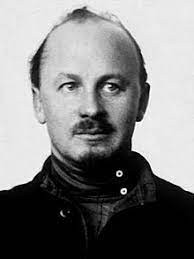
The other observation that I found incongruous was the categorization of Nikolai Bukharin, whom Furubotn admired, and whom Sunde had apparently invoked alongside Genrikh Yagoda in denouncing Furubotn. Professor Titlestad writes: “Bukharin had long been one of the leading liberal Soviet leaders after the revolution in 1917, and his trial attracted significant international attention.” I believe that this is a serious misconception. Bukharin was innocent of most of the crimes he was accused of (but perhaps not that of threatening Stalin’s power), but he was no ‘liberal’. He was a Bolshevik who had enthusiastically embraced the revolution, and he was until his death a firm champion of the ‘glorious Cheka’ and its barbarous methods. A too facile equivalence of Bukharin and Furubotn glosses over what Furubotn might have become.
* * * * * * * * * * * * *
Postscript
Lastly, a few observations on methodology. My collaborator on this project, Nigel Austin, has been a determined sleuth, tracking down arcane sources, identifying persons who have some connection with the mystery, and refusing to let go. I know, however, that he was continually on the search for proof of exactly what happened on that night in September, the proverbial ‘smoking gun’, and he might have proceeded forever until he found such. I have occasionally been able to track down such items in my attempts to solve intelligence mysteries, such as with the memorandum about Guy Burgess and the Comintern, the Letter from Geneva concerning Len and Ursula Beurton, and the article in the Viennese newspaper that revealed much about MI6 and Kim Philby, but such moments are very rare.
I decided to explain to Nigel that historiography is frequently an exercise of the imagination, a detective investigation, in which one searches for clues, and then tries to construct a pattern of behaviour and events that can explain what is superficially inexplicable. There is not going to be a solid paper-trail in a case as complex as this. And that is how it was with ‘The Airmen Who Died Twice’. To me, the borrowed uniforms and ID-tags suggested stowaways of some kind. Yet in those conditions the stowaways could not have been furtive: they must have had approval. They could not have been British airmen: that group was completely accounted for. They must therefore have been agents, saboteurs, spies, of some kind. They would not have been Norwegian communists in exile: such persons would not have had to disguise themselves that way, impersonating British RAF crew members. They must have been NKGB agents – Russians. And if they were agents, they must have had a mission. And the obvious mission was assassination. A study of Norwegian resistance quickly came up with the name of Peder Furubotn, who had offended Stalin.
Thus was the theory constructed. It all seemed rather tenuous: had Furubotn really annoyed Stalin that much? And why would Stalin choose that time to set his murder-squad off the leash? And then the encounter with Professor Titlestad’s latest research indicated that assassination attempts had already been made against Furubotn. Stalin could no longer rely on the Gestapo or the Sunde organization to get rid of his foe. So he took on the task himself, and invoked the gullible Churchill to assist him. As the cliché goes: ‘The rest is history’. But in this case it has not been so – until now. And it would be commendable if the British Government, through the Ministry of Defence, made some sort of statement and apology to the public and to the relatives of the dead airmen in time for the eightieth anniversary of the crash on September 17, 2024.

Bravo and thank you: a fascinating journey, which may yet continue!
regards Nigel
Thanks, Nigel.
As an experiment, I have added the texts in PDF format. (Thank you, Keith!) Please see my fresh comments in the Introduction to this Post.
Interesting although I would appreciate a list with your sources (maybe I missed it somewhere in the text?) and that you show documents or photos to underscore what you write about your theory.
Where exactly were the two russians supposed to jump out?
Thank you, Ola.
Yes, I have committed to providing a list of sources in a later bulletin. I think the pictures I have appended are fairly self-explanatory, but they need to be sourced, too.
I believe the plan was to drop the two agents near the SOE and Milorg encampments at Elg, which were close to Furubotn’s hide-out after Almenrausch. (I did develop a rough hand-drawn map of all the locations, which would be very useful, but now I cannot find it! I shall search and polish it up for broader consumption when I do find it . . .)
Tony.